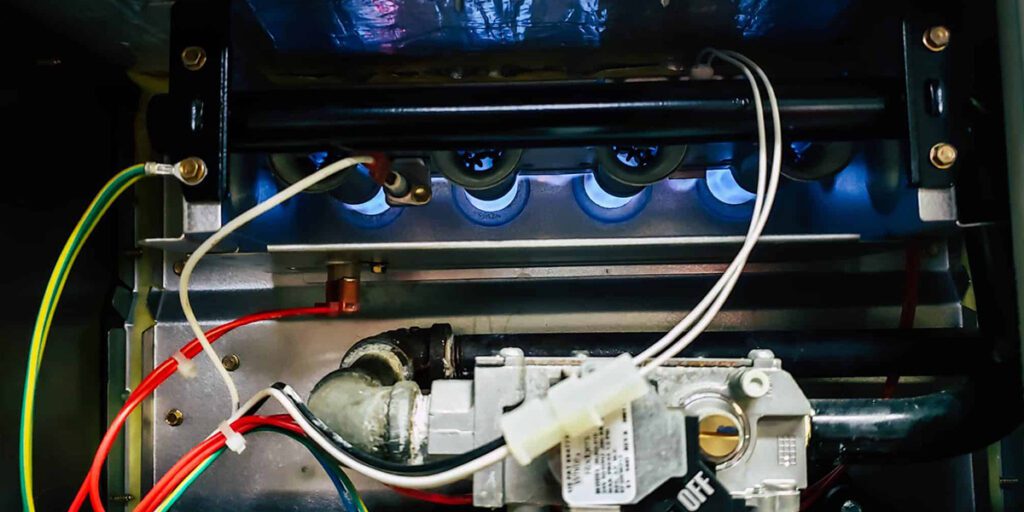There are a lot of misconceptions when it comes to what you should and shouldn’t do in your home. These myths confuse and can lead homeowners astray from the right way to handle their many household concerns.
With appliances, there is one myth that has circulated for decades that is still believed by many today: The pilot light on a gas furnace needs to remain lit at all times. This idea has no basis.
Table of Contents
ToggleIn this article, we will discuss why the pilot light does not need to be left burning, and what happens if it’s allowed to stay lit constantly. There are also some safety issues involved with having a constantly lit pilot light in your furnace, but we’ll talk about those later.
Also check: Symptoms of Dirty Furnace Burners
Why does the pilot light go out anyway?

When you turn on your furnace for the first time of the season, or any time before that, the pilot light will ignite. Once it is lit, it will begin to heat a small metal rod until it glows orange. When the metal rod is hot enough, it will cause vapors in your gas pipe to catch fire and burn inside your furnace. This process is what heats your home during colder months.
The problem with allowing the pilot light to stay lit at all times is that after some time has passed, debris can build up around its base. That debris is created by ash from burned gas streaming through it as well as dust that collects on the unit over time – especially if it has not been used for a while. Once that debris gathers around the base, the pilot light will have difficulty reaching its necessary heat to keep it lit. Because of this, your furnace can lose prime and need to be reset for it to continue working during colder months.
What happens when you don’t turn off the pilot light?
If you do not turn off your furnace’s pilot light or allow it to shut off by itself, you could risk hazardous gas buildup within your home. When that gas does not burn inside of your furnace, it can escape through any cracks in your house where its vapors can reach outside air. And because that gas is made up of combustible materials, if enough gas builds up outside and reaches a heat source (like a lit grill), it can ignite and cause an explosion.
The other safety issue with leaving the pilot light on constantly is that it can damage your furnace over time. Since debris continues to build up at its base, the metal rod will not get hot enough to properly function and could miss-fire. This would cause an unsafe situation where gas enters your home without being burned inside of the furnace, which again creates the potential for buildup and possible explosions or leaks.
So if you’ve been considering turning off your furnace’s pilot light – even if just for a few hours – you should do so right away and see how much money you save! The main reason people leave their pilot lights on is that they think it will save money on their energy bills. Unfortunately, this is not the case at all.
Myth:
The pilot light needs to be on for your furnace to work
Fact:
You can turn off your furnace’s pilot light and still use it during colder months without any problems or safety concerns. It should only remain lit when you are using it. If it is kept lit 24/7, you could run into serious issues with your home’s safety as well as see much higher heating bills than desired.
Also check: 5 Common Furnace Problems That Are Reported By Homeowners
Conclusion:
The pilot light is a safety feature that shuts off automatically in most cases, but if you’re not sure what your furnace needs to work safely and efficiently, call the experts at K2 Mechanical. We can diagnose any issues or answer any questions about your heating system, so you don’t have to worry about it!





















